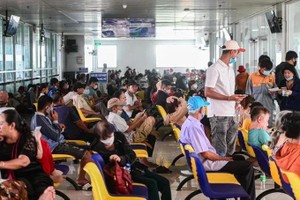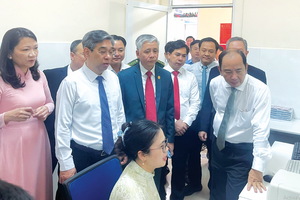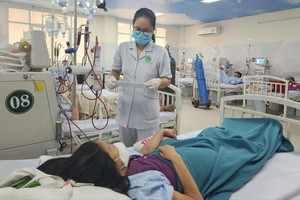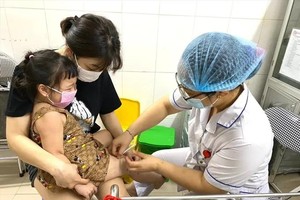
It will be the practical basis for developing a restructuring plan for Ho Chi Minh City's healthcare system after the merger.
According to experts, after the merger of Binh Duong and Ba Ria – Vung Tau provinces into Ho Chi Minh City, the southern metropolis would expand from 2,095 square kilometers to 6,772 square kilometers, and its population would grow from 9.9 million to over 13.7 million. As a result, the demand for healthcare services is expected to rise sharply. However, healthcare resources may also increase; they are unlikely to keep pace with the surge in demand.
Specifically, the number of hospitals across the city will increase from 134 to 164 facilities, including 27 in Binh Duong and 13 in Ba Ria–Vung Tau. The total number of hospital beds will rise from 41,525 to 49,147, with 5,202 beds in Binh Duong and 2,420 in Ba Ria–Vung Tau. However, the ratio of hospital beds per 10,000 people is projected to decline from 41.7 to 31.3, falling short of the current target of 42 beds per 10,000 people.
The number of doctors is set to grow from 20,727 to 24,629, but the doctor-population ratio will drop from 20.8 to 13.08 per 10,000 people, compared to the target of 21. The nurse-population ratio will decrease from 37 to 29 nurses per 10,000 people, compared to the goal of 39.

In addition, the total number of public healthcare service records processed annually in the city is projected to surge from an average of over 20,000 to more than 30,000.
There will also be an increase in the number of patients. Outpatient visits are forecast to increase from over 42 million to more than 51 million annually, while inpatient admissions are projected to rise from over 2.2 million to more than 3.8 million per year. As a result, Ho Chi Minh City’s healthcare system accounts for over 30 percent of all outpatient visits and more than 23 percent of inpatient admissions nationwide.
Ho Chi Minh City’s major hospitals will face overcrowding if the healthcare sector does not proactively implement immediate and long-term solutions. This presents a major challenge, but it also offers a significant opportunity for the sector to expand operations by establishing second and third campuses of leading general and specialized hospitals in Ba Ria–Vung Tau and Binh Duong.
This approach would not only meet the growing demand for medical care but also catalyze the development of medical tourism in the city.
At the same time, the healthcare sector should advise on updating the master plan for system development, including the establishment of fourth and fifth advanced medical clusters in Binh Duong and Ba Ria–Vung Tau provinces, examination and assessment of the ratio of hospital beds, the doctor-population ratio, and the nurse-population ratio aligned with the evolving context.
According to the Ho Chi Minh City Department of Health, total public investment in the city’s healthcare sector for the 2021–2025 period increased from VND48,549 billion to VND52,424 billion, covering 115 projects in Ho Chi Minh City, 31 in Binh Duong, and 8 in Ba Ria–Vung Tau.
For the 2026–2030 medium-term period, total investment is projected to rise from VND58,638 billion (US$2.26 billion) to VND65,134 billion (US$2.51 billion), with 82 projects in Ho Chi Minh City, 14 in Binh Duong, and 2 in Ba Ria–Vung Tau.
In addition, the city’s health sector is seeking to attract investment through six public-private partnership (PPP) projects, with an estimated capital of over VND10,000 billion (US$385.5 million).
In reality, many hospital construction projects are very effective. However, there are still several projects that have been delayed in their completion due to various reasons. All representatives agree that city leadership must urgently implement fundamental solutions to help the healthcare sector manage public investment projects effectively, especially following the merger of the three Departments of Health.
























